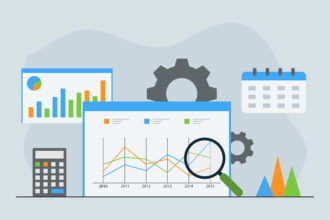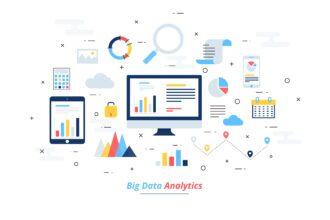If you invest in the stock market, you’ve probably developed an array of strategies meant to support your financial well-being, and data surely figures in as a prominent part of that plan. Where do you get your data, though? Left to your own devices, it can take a great deal of work and organization to aggregate the necessary information to make smart trades. Luckily, with the help of one of today’s popular APIs, you don’t have to.
API 101
An application programming interface (API) is a digital tool used for a variety of financial tasks, and that has particular value when dealing with the stock market – and there are many different APIs, as well as options for developing your own. When choosing a stock API, however, you’ll want to reflect on your own investment strategy, as well as the various functions embedded in the platform. Depending on your preferences, you’ll want to consider top stock market APIs like Alpha Vantage, Xignite, and Polygon, among others.
The data available via APIs is rapidly transforming online investment, and it’s made it possible for individual investors to decrease their risk, develop more creative investment strategies, and contextualize trades within the current market and the stock’s individual history. As you navigate through your chosen API and evaluate the different settings and configurations, be on the lookout for these different types of data.
Real Time Pricing
Real time stock prices are obviously among the most valuable data available through your investment API, and all of them offer this piece of information. What varies between APIs, however, is their accuracy. Polygon’s stock API excels in this regard because they’re partnered with Equinix NY Datacenters, the same ones used by the New York Stock Exchange. Of course, given modern technology, this means that Polygon is accurate to the nanosecond, while others are accurate to within a second or so, a difference that may not be significant as one would think since the type of investor that values such level of accuracy is most likely already a customer of the high-priced traditional data merchants such as Bloomberg.
Historic Data
Real time pricing may determine what you do in the moment, but before you make it that far, you’re going to want to take a closer look at a stock’s historic trends. How has a given stock behaved before, and what kinds of patterns is that behavior linked to? Platforms like Alpha Vantage offer stock APIs for daily time series, including over 20 years of historical data. For a given stock, investors can look at daily highs and lows, close, open, and volume information, providing a fuller sense of its performance. Many also offer weekly and monthly data, and data for set time frames.
Currency Conversions
When investing via an API, you might be investing in stocks that trade on local markets, but you may also be performing international trades, in which case it can be harder to understand the financial implications. Any API that crosses financial markets, however, should also be able to provide currency conversions within the platform so that you can determine your costs, potential gains, and other value points. Depending on the platform, though, you may not have access to predictive data on conversion fluctuations or similar challenges linked to floating currency rates.
AI Indicators
Not all API data is real time or historic, but real time and historic investment data can form the backdrop of future predictions. Yes, certain stock market APIs offer advanced data models (e.g., technical indicator analysis), allowing investors to look at the potential outcomes of different trades. In particular, advanced AI capacity is at the heart of Alpha Vantage’s planned digital transformation, and they have the resources since their platform is based in Silicon Valley.
Other Data Options
In addition to real-time pricing, historic data, and AI predictions, APIs may offer additional types of data, depending on the type of investment you seek to make, their interface, and the underlying code. This is part of what makes APIs so interesting – many are developed from open source code or are otherwise designed to be modified by coder-investors who are interested in exploring data management possibilities. In other words, if you want access to information that your current API doesn’t offer, you may be able to find a simple modification or alternative platform that offers it.
Data Exports
Whatever your platform of choice, one of the advantages of using an API rather than researching the background on your investments independently is that, in addition to saving you a lot of time, you can also export that data so that it’s easier to use. In most cases, that means exporting it to an Excel spreadsheet, which can also make it easier for you to annotate that data and plan your trades. It’s all right there, whatever data you’ve chosen, ready to help you make better investment decisions.
APIs may not be necessary to investing, but they certainly make it easier to research and choose stocks; and given the ongoing shift to independent investing, they’re sure to form the future of brokerage. Don’t be afraid to test out different platforms, explore settings, and apply what you learned. Over time, you’ll find you have a clear sense of what strategies work for you and that you’ll feel more confident with your financial decisions.











